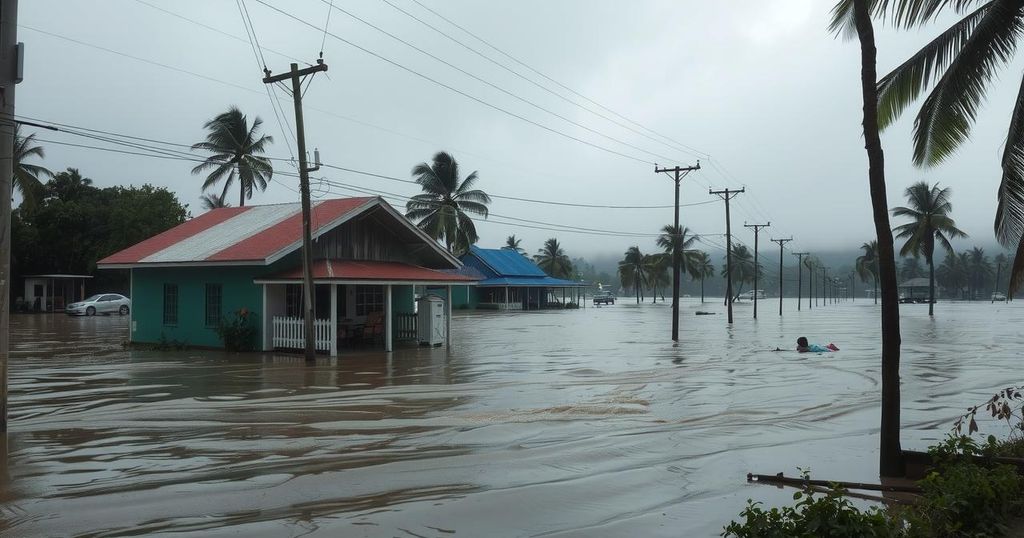Tropical Cyclone Kristine Causes Devastating Flooding Across Northern Philippines
Tropical cyclone Kristine has caused devastating flooding in the northern Philippines, leading to over a dozen deaths and affecting more than one million residents. The storm, originally named Tropical Storm Trami, triggered landslides and extensive damage, leaving thousands displaced. Amid ongoing rainfall and significant risks, disaster officials warn of increased vulnerability due to the region’s climatic conditions.
Tropical cyclone Kristine has wrought significant havoc across the northern regions of the Philippines, leading to the unfortunate deaths of over a dozen individuals and leaving several others missing. The National Disaster Risk Reduction and Management Council has indicated that the cyclone affected more than one million residents, with thousands likely facing displacement due to landslides and torrential rainfall. Originally identified as Tropical Storm Trami by the Joint Typhoon Warning Center, the cyclone originated west of Guam before making landfall in the northern Philippines. Preceding heavy rainfall and previous cyclones earlier in the month rendered the region highly susceptible to flash flooding, as warned by government officials. Images and videos from the worst-hit areas depict residents navigating through chest-deep waters, while members of the Coast Guard assist in evacuations using boats. Recalling the dire situation, Maria Leonor Robredo, the former vice president of the Philippines, expressed, “People have been stuck on the roofs of their houses for several hours now. Many of our rescue trucks have stalled due to the floods.” The Philippine Atmospheric, Geophysical and Astronomical Services Administration predicted daily rainfall accumulations could exceed five inches, particularly in regions suffering from prolonged inundation. Although Manila, the capital, lies on the southern fringe of the storm’s moisture band, heavy rainfall was still anticipated as Kristine progressed across the archipelago. Despite expectations that the remnants of Kristine would continue moving westward and away from the islands, rainfall probabilities remained heightened due to the ongoing rainy season. Manila typically receives approximately 100 inches of rainfall yearly; however, the recent onset of a neutral “La Nada” climate pattern has contributed to an active cyclone season, influencing regional weather dynamics. Government authorities have yet to release damage assessments, but disaster officials predict extensive disruptions across hundreds of impacted communities. The national weather service anticipates between 13 to 18 cyclones may be monitored in the agency’s responsibility area during the upcoming 2024 season. With at least 10 cyclones having already affected the islands, the remainder of the year presents notable risks for further cyclonic activity.
Tropical cyclones pose considerable challenges to weather management and disaster preparedness, particularly in regions like the Philippines prone to extreme weather events. The archipelago faces numerous cyclones annually, significantly influencing local climates and leading to severe flooding, landslides, and loss of life. Factors such as previous weather patterns and geographical vulnerability contribute to the severity of these events. The current climatic conditions, including the neutral status of the El Niño-Southern Oscillation, impact storm frequency and intensity, elevating risks for affected communities and complicating response efforts.
In conclusion, tropical cyclone Kristine has significantly impacted the Philippines, resulting in fatalities, widespread flooding, and considerable displacement among residents. The situation underscores the need for improved disaster management strategies and readiness in dealing with the challenges posed by frequent and intense cyclonic activity. As the region continues to face such climatic threats, proactive measures and timely responses become crucial in managing future disasters effectively.
Original Source: www.foxweather.com




Post Comment